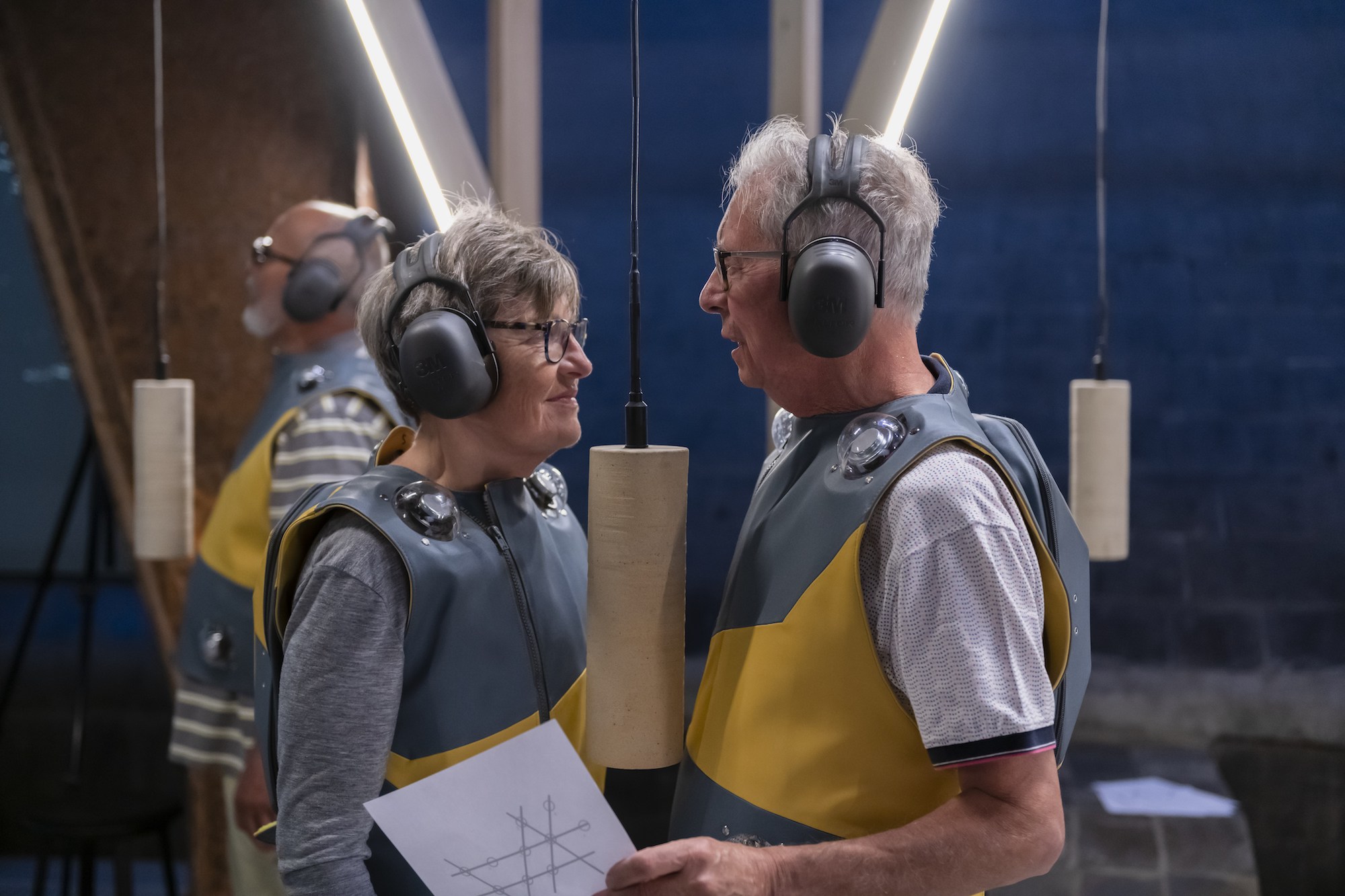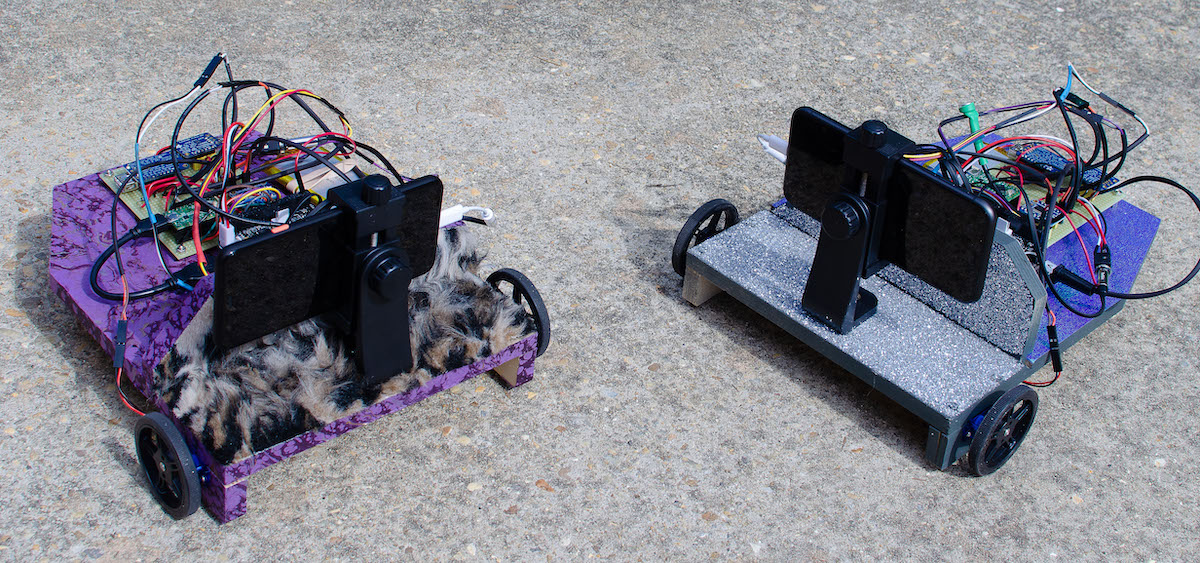The Intimate Earthquake Archive
Interactive wearable artwork where audiences experience seismic activity through their body
The Intimate Earthquake Archive is an interactive wearable artwork consisting of tactile earthquake vests which playback haptic compositions derived from the seismic archive of the Groningen gas fields. Now in its 3rd edition, this work gives the audience a firsthand experience of seismic activity which plays out as vibrations on the surface of their skin.
Embodied Seismic Activity
We’re very excited to finally feature this project, which has been ongoing since 2016 when the above video was made for the very first revision. We have watched this installation grow from the first prototypes to its now mature form, and it is one of the most ambitious and accomplished applications of the Bela technology. Read on to find out more about the installation and its inspiration.
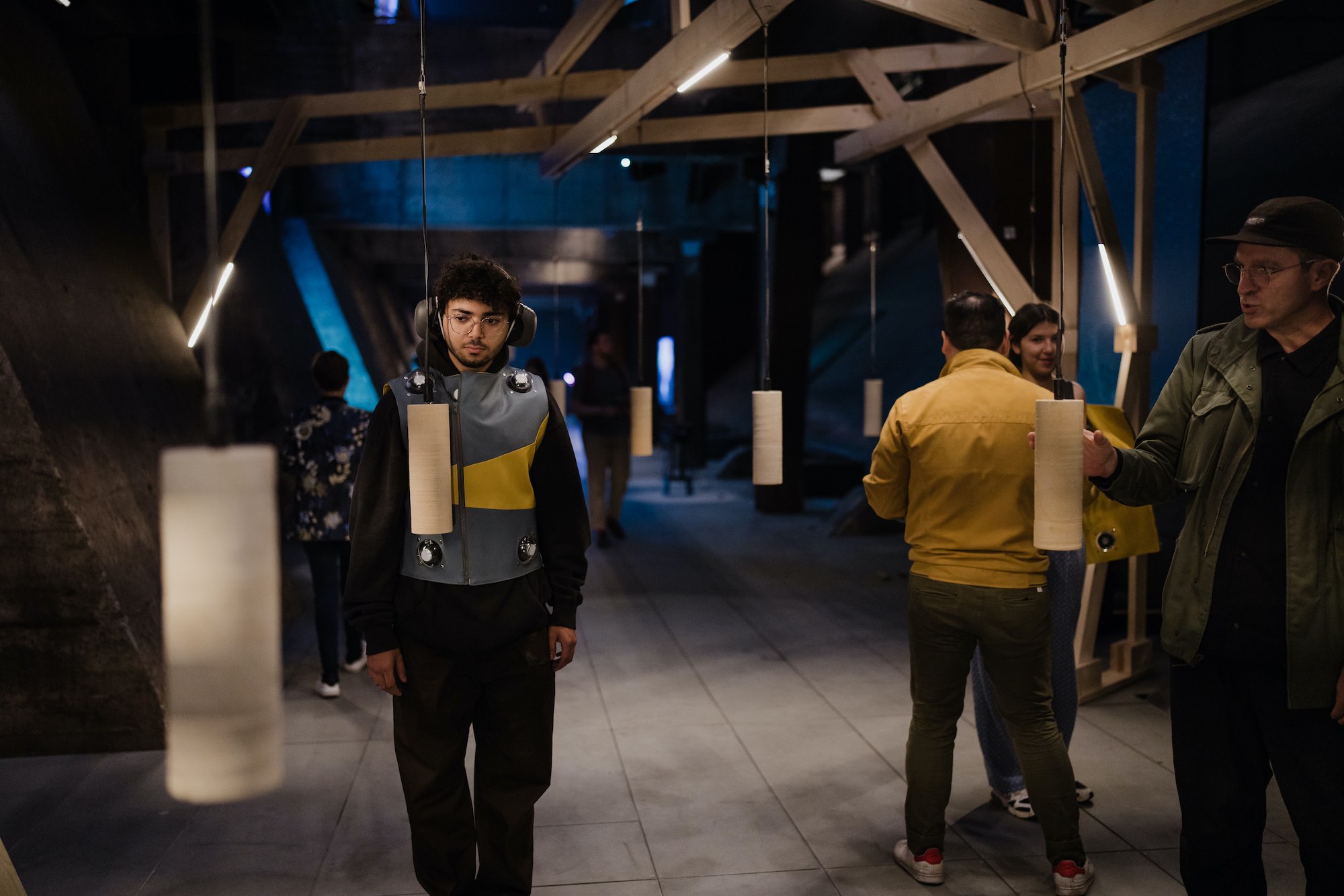
Audience members walking through the installation. As they move close to the hanging core samples different earthquake compositions are played back through their haptic vest. Photo: Franz Wamhof.
For the last 32 years the north of The Netherlands has experienced man-made earthquakes due to gas extraction in the largest field for natural gas in Europe, the Groningen Gas Field. The work The Intimate Earthquake Archive, brings together research done by artist Sissel Marie Tonn on how these earthquakes are remembered.
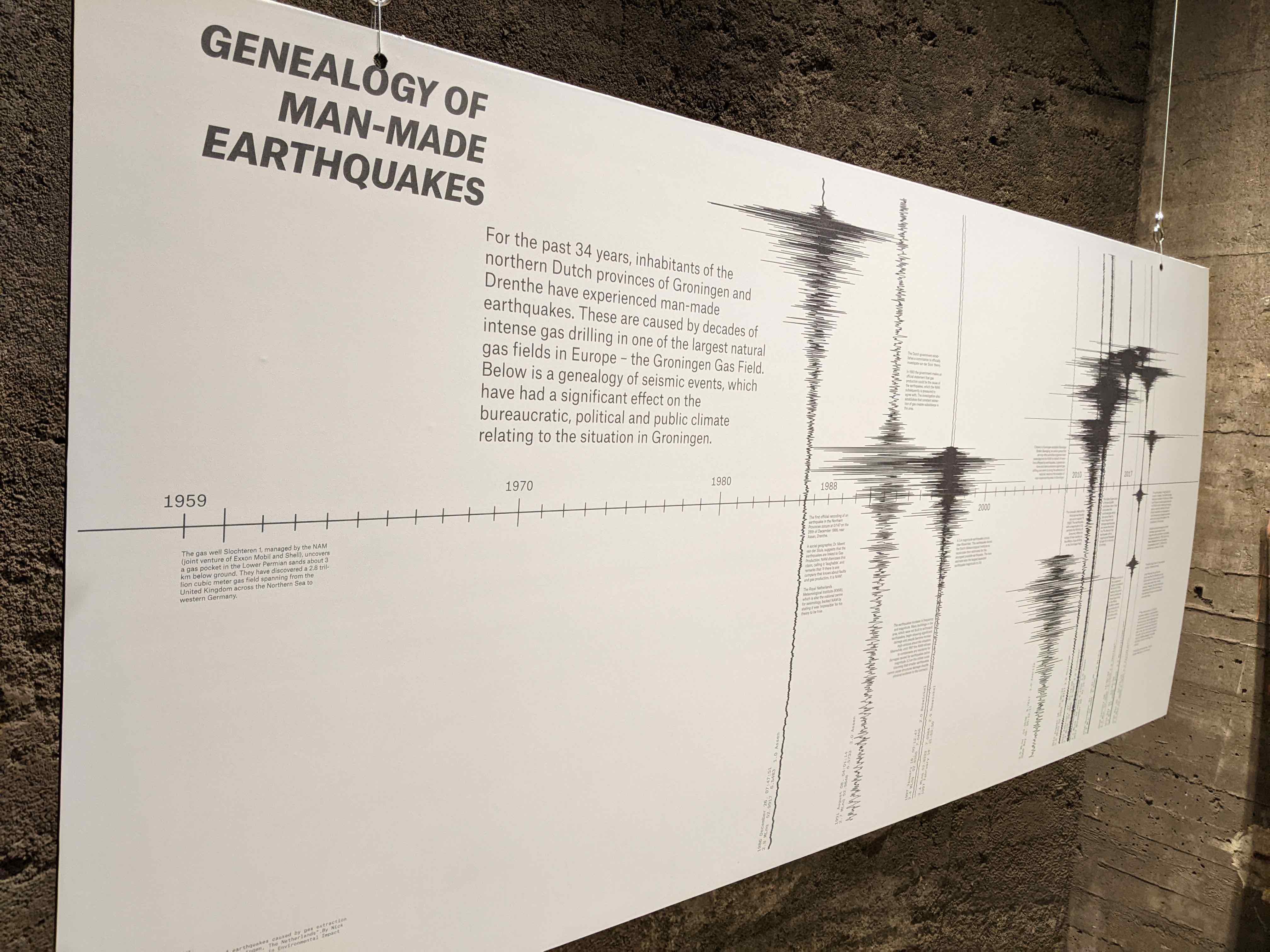
The timeline of man-made earthquakes in the north of the Netherlands. Photo: courtesy of the artists.
She brings together detailed seismic recordings from the immense database of the Dutch Meteorological Institute (KNMI) with the personal stories of people living in Groningen, who provide precise descriptions of feeling this seismic activity passing through their bodies.
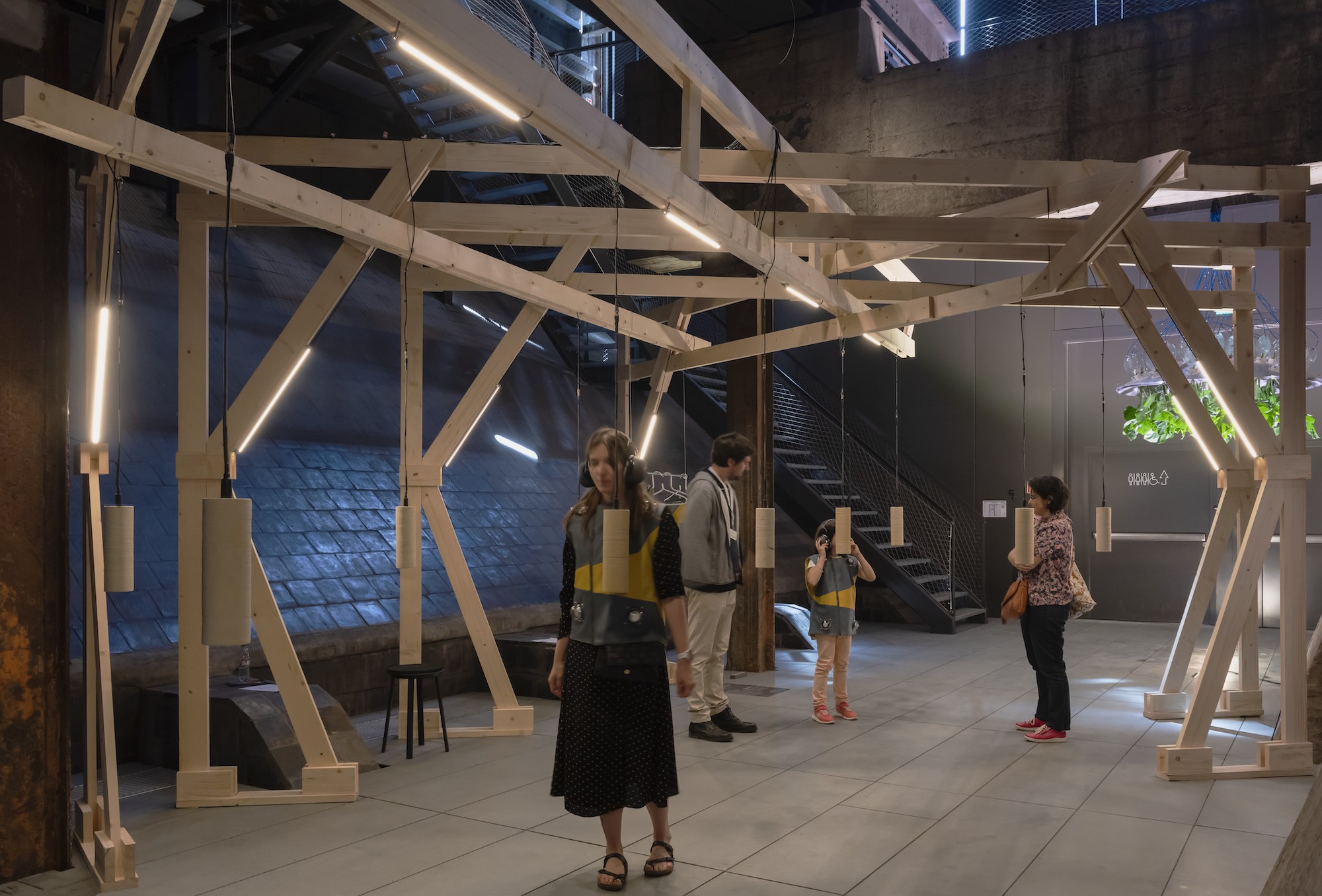
The haptic vests were designed to easily fit a variety of body types including children. Photo: Franz Wamhof.
Together with Jonathan Reus (see a previous project with Bela), Sissel developed the The Intimate Earthquake Archive to overlay the digital seismic archive of the KNMI, marked by its scientific and highly specific modes of collection, with a tactile archive, one which can only be accessed through the sensing body of the visitor through a specially designed wearable interface with embedded surface (skin) and bone conduction transducers.
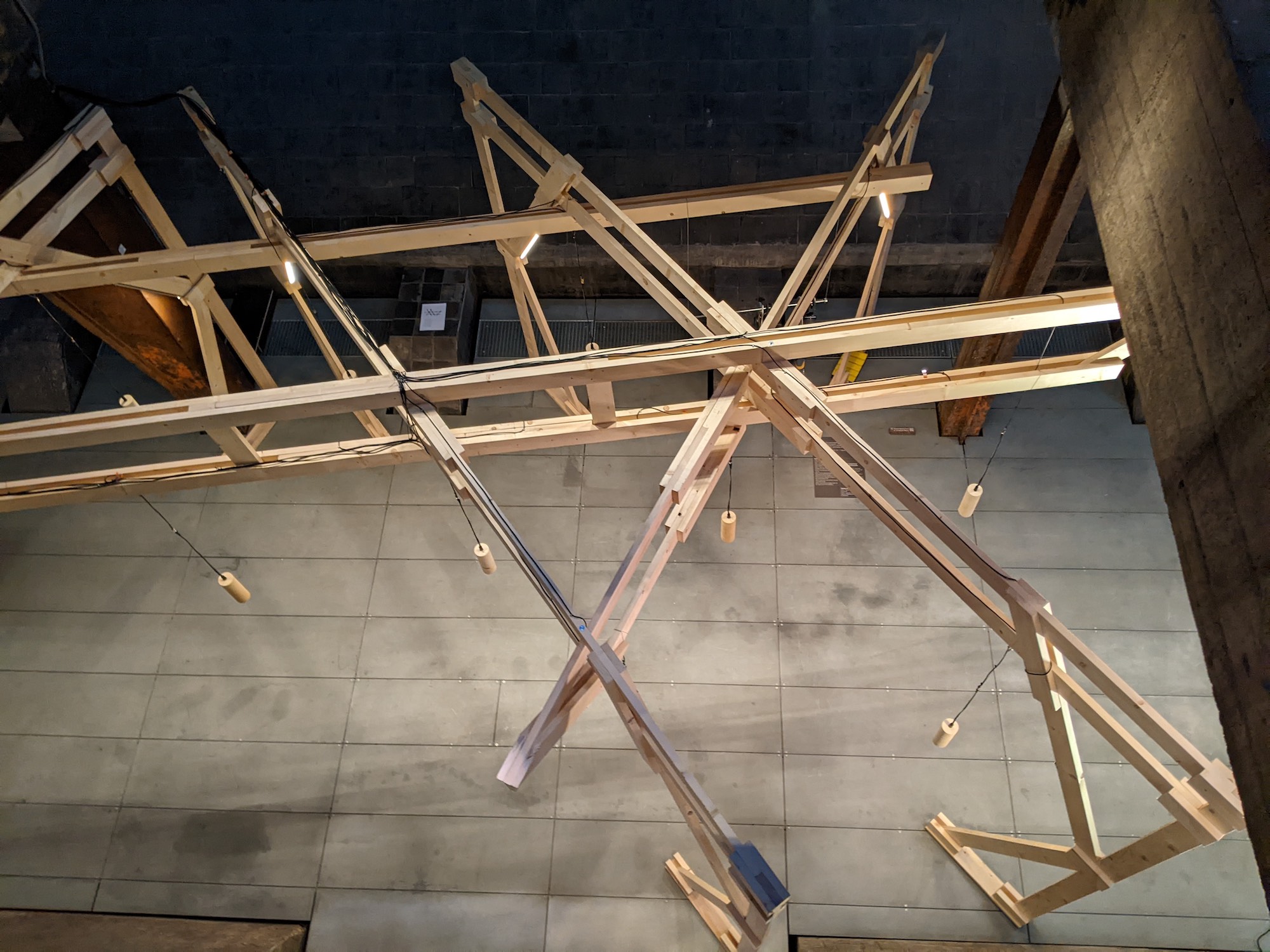
The installation space seen from above with the 12 hanging core samples which act as radio transmitters. Photo: courtesy of the artists.
The artists carefully chose 12 earthquakes of cultural and political significance to be part of this sensory archive, and transformed these data sets into vibratory compositions that move across the body and at the subsurface of the skeleton.
Creating the Haptic Vest
Visitors choose which earthquake compositions they want to experience by positioning themselves within a network of long-wave radio transmitting core samples, where proximity to the samples increases the intensity of experiencing that entry. The vibrations move across the skin similarly to how the earthquakes moved across the land, and are intended to inspire a ‘deep listening’ experience within the body.
The first two versions of the vest were designed and fabricated by Sissel herself. The 3rd version, pictured in this post, was designed with Das Leben Am Haverkamp and was developed in response to the start of the covid pandemic, using special anti-viral fabrics which are easy to clean in a way that previous designs were not.
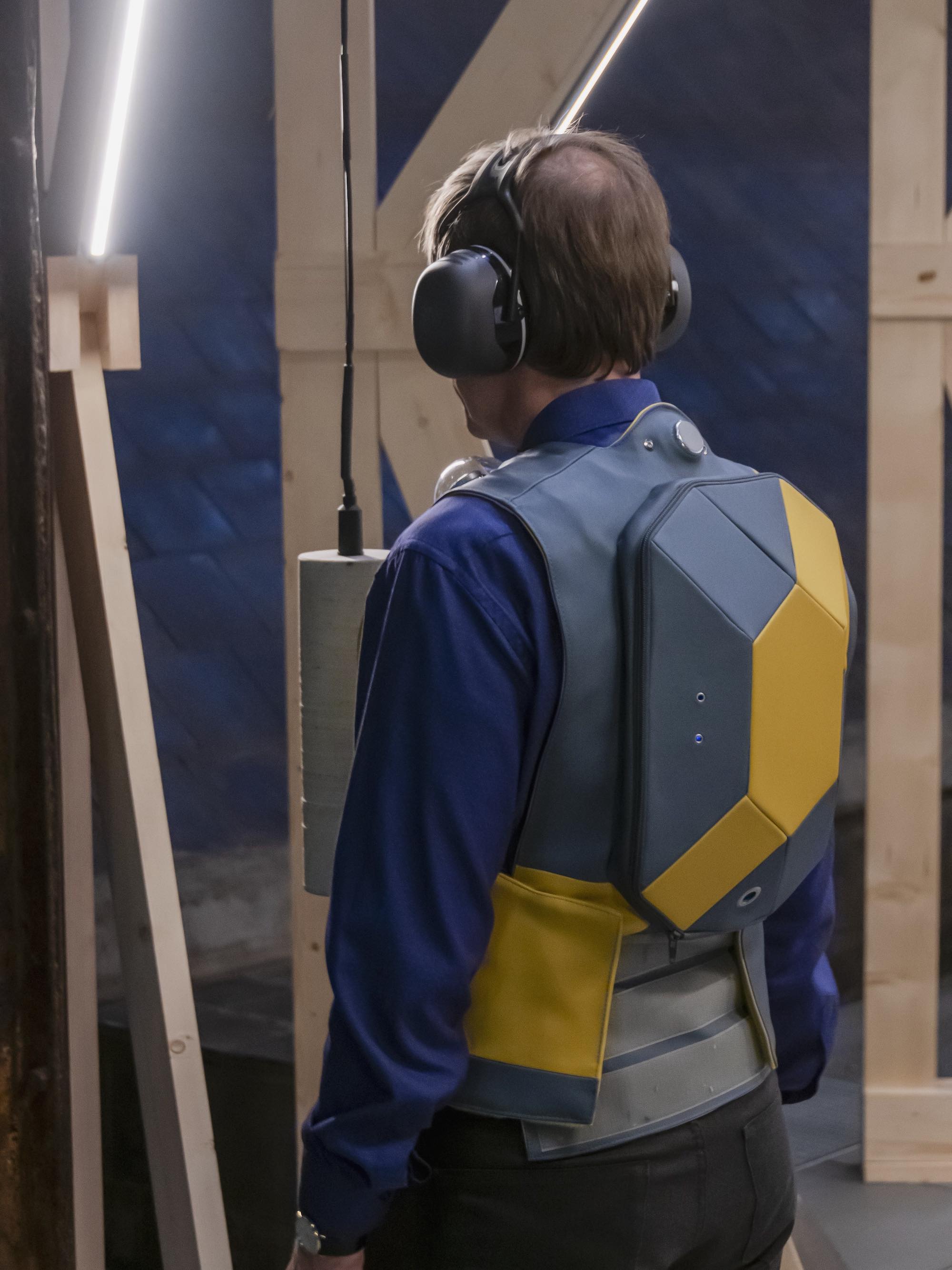
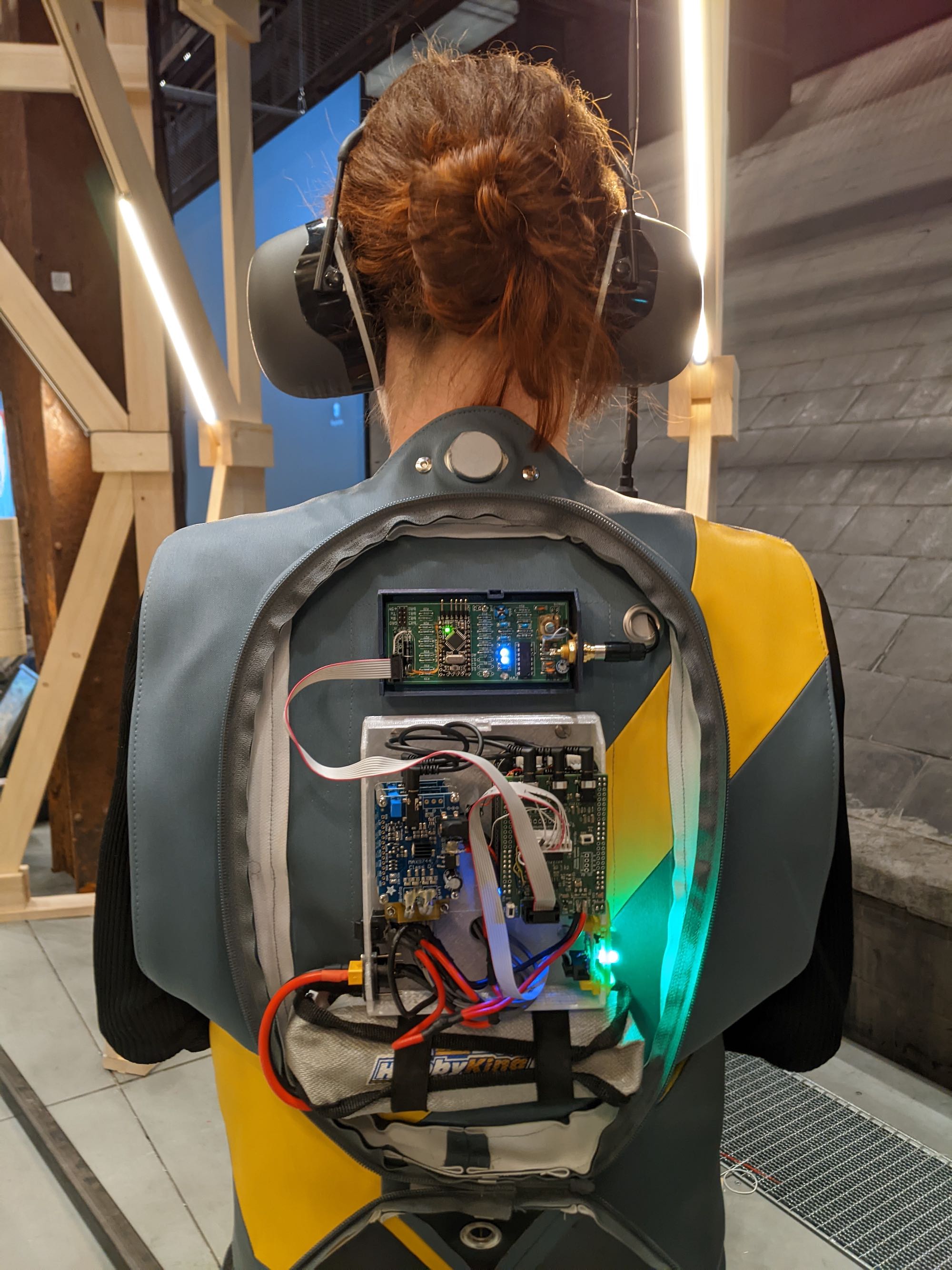
Wearable haptic vest designed in collaboration with Das Leben Am Haverkamp. The back of the vest contains the Bela board and other circuitry which is used to generate the vibrotactile signals sent to the transducers in the vest. Photo: courtesy of the artists.
Each of the vests contains a radio receiver which receives from each of the beacons. There are also a number of vibrotactile actuators for delivering the vibrations to the skin of the audience alongside the necessary amplifiers. Each vest runs off a Bela board which has been programmed using Supercollider.
A custom capelet that goes on top of the Bela to handle power management was built (the whole thing is powered by a 14V quad-copter battery). This also handles audio outputs from the analog I/O (each vest uses 6 audio channels). The capelet was created back in 2016 before the CTAG was available which would now be useful in combination with an external power management board.
About the Artists
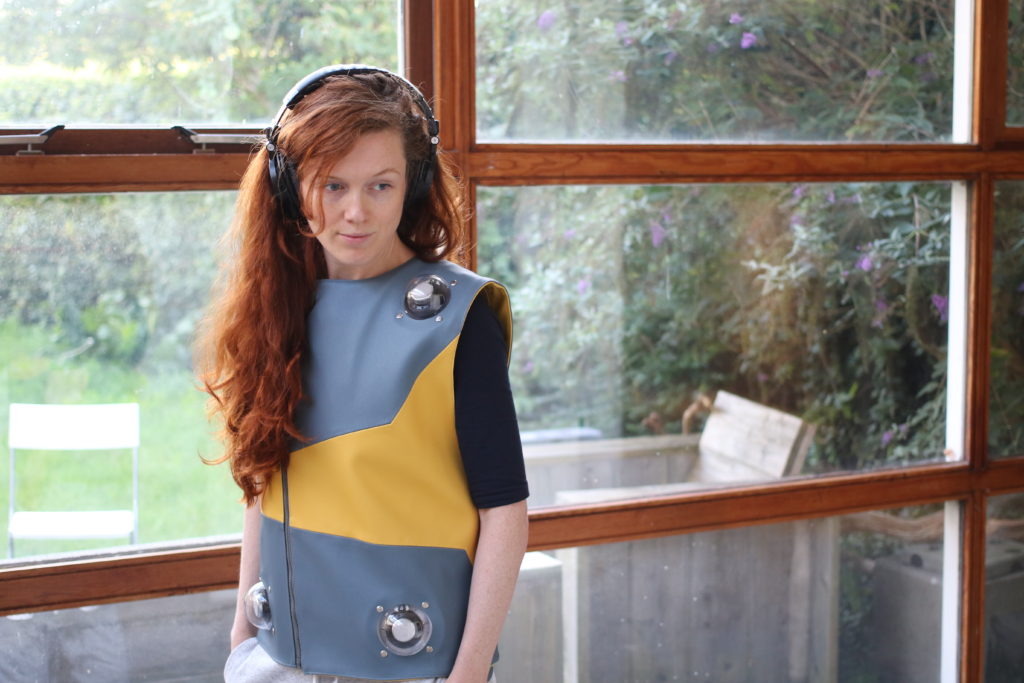
Sissel Marie Tonn wearing the haptic vest. Photo: courtesy of the artists.
Sissel Marie Tonn (1986) is a Danish artist living in The Hague. She works with multi-media installation, drawing and writing, and her processual approach is driven by a great deal of curiosity and the possibilities of building relationships across fields. Her work builds upon an interest in ‘presence’ within ecologies undergoing subtle or profound changes. Within this discourse the work explores these environmental (often humanly induced) changes, extending the public debates towards epistemological issues connecting these events to the body and its sensing of presence. She completed a master in Artistic Research at the Royal Academy of Art in The Hague in 2015. She is the co-founder of the artist initiative Platform for Thought in Motion together with artist Jonathan Reus.
Compositions & Data Sonification: Jonathan Reus
Interactive system and software/hardware development by Marije Baalman, Carsten Tonn-Petersen and Jonathan Reus
Wearable design for revision 3 of the haptic vest in collaboration with Das Leben Am Haverkamp.

